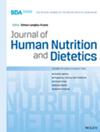The Relationship Between Potential Listeria monocytogenes Exposure and Diet Quality and Dietary Intake During Pregnancy: A Cross-Sectional Analysis in Australian Women
Abstract
Background
Research conducted over two decades ago indicated that more frequent consumption of foods potentially harbouring Listeria monocytogenes is associated with higher nutrient intakes but also higher risk of miscarriage. However, the influence of potential exposure to Listeria monocytogenes on pregnant women's diet quality is yet to be examined. Additionally, advancements in agricultural practices and food consumption trends in recent years may have led to changes in pregnant women's dietary intake. Therefore, the present study aimed to evaluate the associations between potential L. monocytogenes exposure and dietary quality, and dietary intake in two contemporary cohorts of pregnant women in Australia.
Methods
A secondary analysis of two combined pregnancy cohorts of women aged ≥ 19 years with a singleton pregnancy from the Newcastle, New South Wales (n = 441) and Perth, Western Australia (n = 1197) was conducted. Potential L. monocytogenes exposure was estimated by the Listeria Food Exposure Score (LFES), dietary intake was assessed using the Australian Eating Survey and diet quality using the Australian Recommended Food Score. Pearson's correlation and linear regression analyses were performed to estimate the associations between potential L. monocytogenes exposure and dietary quality and intake, with adjustment for potential confounders.
Results
Data from 1638 women (mean [SD] age 32.0 [5.0] years, 57.8% born in Australia) were included. The median (IQR) gestational age was 35 (34–36) weeks and 43.5% of women had no prior pregnancies. A higher LFES (i.e., more frequent consumption of potential food sources of L. monocytogenes) was significantly associated with higher diet quality score (r = 0.60, p < 0.001), higher intakes of nutrient-dense core foods (r = 0.11–0.43, p < 0.001), and higher micronutrient intakes (r = 0.24–0.52, all p < 0.001).
Conclusion
More frequent consumption of foods that potentially harbour Listeria monocytogenes is associated with higher diet quality and nutrient intakes. Further research is needed to identify how to support women to achieve optimal diet quality and nutrient intakes while simultaneously minimising risk of listeriosis.


 求助内容:
求助内容: 应助结果提醒方式:
应助结果提醒方式:


